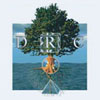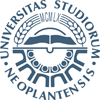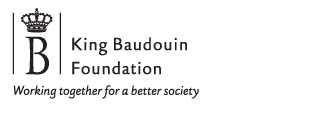History
The City of Novi Sad was established in 1694, although first archaeological findings revealed the traces of settlements dating even earlier than 3000 years BC. First inhabitants were 12 soldiers stationed in Petrovaradin and 20 bakers, butchers and other craftsmen who provided services to the garrison from that time.
It may be that the textbook of history of Novi Sad is not a voluminous book, in comparison to other European cities, but its has been - since 1694 when the rampart opposite the Petrovaradin Fortress was built, and around it, along the other bank of the Danube, where the river is the narrowest, the settlement of civilians started growing that was, at that time, called "Petrovaradiniense" or "Rascianica civitas trans Danubium situata".
The delegation of citizens travelled to Vienna and borrowed money to pay for the "Liberation Charter". The act of payment of 80.000 forints in silver meant that our ancestors, honoured merchants and craftsmen, bought independence and freedom and opened widely the gates to the development of their heirs. The loan was paid off in meadows and barren land that the city sold to its citizens.
So on February 1, 1748 the Empress Maria Theresa announced the proclamation of the "Free Royal City" which she named "Novi Sad", in Serbian, or "Neoplanta" - in Latin, "Ujvidék"- in Hungarian and "Neusatz"- in German.
The life at the crossroads and a wish to live in accordance with the spirit of this city had their price in turbulent times. In 1849 Novi Sad was heavily destroyed by bombardment - only 808 building were left out of 2.812 that the city had had before that.
In the middle of the 19th century life in the city was marked with renewed construction and development. Most pieces of architecture from the old city kernel date from that period. From that period up to the World War I many significant buildings were constructed - the City Hall, Bishop's Palace and Catholic Church in the centre of the city, the building of the present Scondary School "Jovan Jovanovic Zmaj", Lodine Spa, Matica Srpska etc.
In the middle of the 19th century, being still under the Austro-Hungarian rule, on the border with the Turkish Empire, Novi Sad grew into a significant economic centre anda cultural, national and political centre of all the Serbs and that is why poets called it the Serbian Athens. In 1864 the city became the centre of Matica Srpska, the oldest scientific-cultural institution of the Serbs and in 1861 the Serbian National Theatre, which is the oldest professional theatre in our country, was established.
After the World War I the Serbian Army entered Novi Sad on November 8th, 1918 and the Great National Assembly of the Serbs, Bunjevci and other Slavs decided on November 25th to join Banat, Backa and Baranja to the Kingdom of Serbia. The Srem Assembly in Ruma made the same decision a day earlier.
In the Kingdom of Yugoslavia Novi Sad became the centre of "Dunavska banovina" (Danube County). It got its first boulevard at that time, the building of the Banovina Palace and a new bridge. In 1936 Novi Sad had 69.000 inhabitants.
The World War II brought a horrible raid of Horty's fascist army in which, within only three days, more than 1.500 inhabitants of Novi Sad were killed, most of who were the Serbs and Jews. During the World War II Novi Sad lost several thousands of its inhabitants.
The Novi Sad Partisan Detachment liberated Novi Sad on October 23rd, 1944.
The so-called anti-bureaucracy revolution in 1988 brought changes of political relations in the country and Novi Sad was deprived from its competencies. Several years later the city was devastated by inflation, the population was impoverished, 72 inhabitants died in wars on the territory of former Yugoslavia, many young and educated people fled the city and it opened its gates to tens of thousands of refugees and people who had been expelled from their homes.
In 1999 NATO bombardment left Novi Sad without bridges, communication and water supply.
After the bombardment the city, which has already been quite exhausted, entered the process of renewal with building of new bridges (the pontoon bridge, temporary road-railway bridge, Varadin Bridge and Freedom Bridge).
Since the elections in 2000 and democratic changes Novi Sad is one of the most dynamic cities in Serbia. New apartment buildings and shopping centers are being built all around the city and the economic situation is gradually improving.






